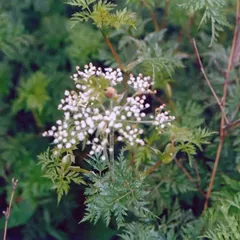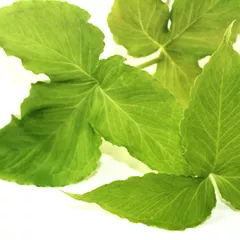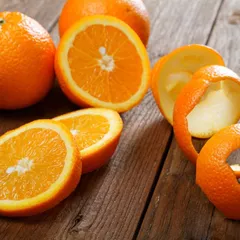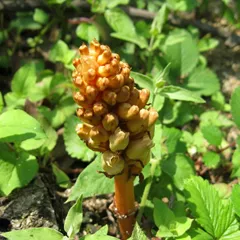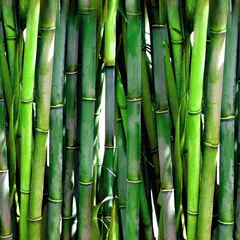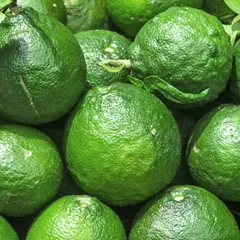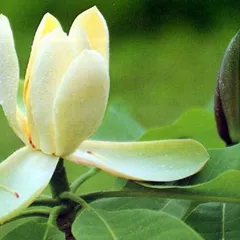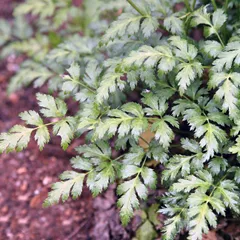Er Chen Tang
Er Chen Tang
Chinese: 二陈汤
Pinyin: Èr Chén Tāng
Other names: Citrus and Pinellia Combination, Two Cured Decoction, Decoction of Two Old (Cured) Drugs
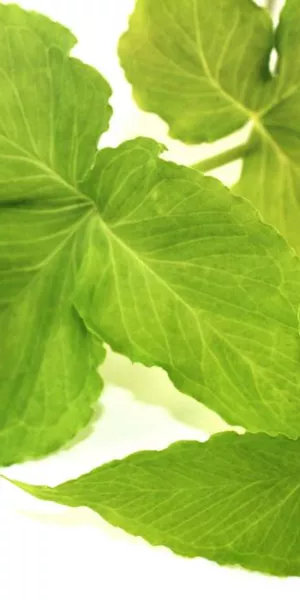
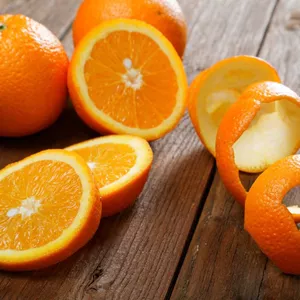
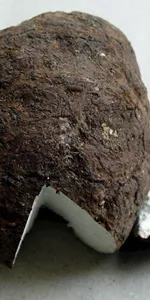
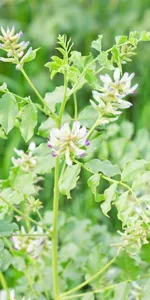
Er Chen Tang
Er Chen Tang
Chinese: 二陈汤
Pinyin: Èr Chén Tāng
Other names: Citrus and Pinellia Combination, Two Cured Decoction, Decoction of Two Old (Cured) Drugs
Number of ingredients: 5 herbs
Formula category: Formulas that dry Dampness and transform Phlegm
Conditions for which it may be prescribed: GoiterEmphysemaPeptic ulcers and five other conditions
- Dries Damp and dispels Phlegm
- Regulates Qi and harmonizes the Middle Burner (Stomach and Spleen)
Contraindications: Contraindicated when the cough is associated with Lungs Yin Deficiency
Source date: 1148 AD
Source book: Formulary of the Pharmacy Service for Benefiting the People in the Taiping Era
The information provided here is not a replacement for a doctor. You shouldn't use it for the purpose of self-diagnosing or self-medicating but rather so you can have a more informed discussion with a professional TCM practitioner.
Er Chen Tang is a 5-ingredient Chinese Medicine formula with Crow-Dipper Rhizomes (Ban Xia) and Tangerine Peel (Chen Pi) as principal ingredients.
Invented in 1148 AD, it belongs to the category of formulas that dry Dampness and transform Phlegm. Its main actions are: 1) dries Damp and dispels Phlegm and 2) regulates Qi and harmonizes the Middle Burner (Stomach and Spleen).
In Chinese Medicine health conditions are thought to arise due to "disharmonies" in the body as a system. These disharmonies are called "patterns" and the very purpose of herbal formulas is to fight them in order to restore the body's harmony.
In this case Er Chen Tang is used by TCM practitioners to fight patterns like Damp-Phlegm in the Lungs, Damp-Phlegm or Phlegm-Fluids. From a Western Medicine standpoint, such patterns can give rise to a range of conditions such as morning sickness, upper respiratory tract infections or chronic bronchitis for instance.
On this page, after a detailed description of each of the five ingredients in Er Chen Tang, we review the patterns and conditions that Er Chen Tang helps treat.
The five ingredients in Er Chen Tang
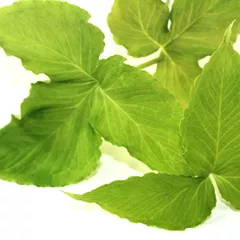
Ban Xia is a king ingredient in Er Chen Tang. Like the name indicates, it means it has more power than other ingredients in the formula.
1. Crow-Dipper Rhizomes (Ban Xia)
Part used: Dried rhizome and tuber
Nature: Warm
Taste(s): Pungent
Ban Xia dries Dampness, expels Phlegm, and causes rebellious Qi in the Stomach to descend. As a single ingredient, it provides most of the actions required in treating a Phlegm-Dampness pattern.
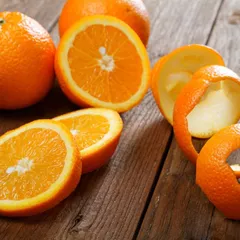
Chen Pi is a king ingredient in Er Chen Tang. Like the name indicates, it means it has more power than other ingredients in the formula.
2. Tangerine Peel (Chen Pi)
Chen Pi disperses stagnant Qi and Cold as well as dries Dampness. It assists the Spleen and Stomach in removing Phlegm by promoting flow of Qi in these two Organs.
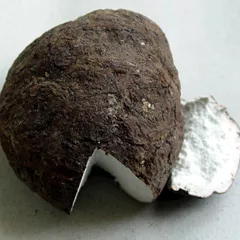
Fu Ling is a deputy ingredient in Er Chen Tang. This means it helps the king ingredient(s) treat the main pattern or it serves to treat a coexisting pattern.
3. Poria-Cocos Mushrooms (Fu Ling)
Part used: Dried sclerotium
Nature: Neutral
Taste(s): Sweet
Meridian affinity: HeartKidneyLungSpleen
Category: Herbs that drain Dampness
Fu Ling leaches out Dampness from the Middle-Burner and strengthens the Spleen. It also resolves the palpitations and dizziness often caused by the upward-rising Phlegm-Dampness. A key Chinese medical text explains its role as such: "Fu Ling is an herb that focuses on treating Phlegm. The root of Phlegm is water. Fu Ling is able to move water and is also able to move Dampness".
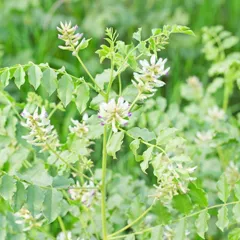
Gan Cao is an assistant ingredient in Er Chen Tang. This means that it either serves to reinforces the effect of other ingredients or it moderates their toxicity.
4. Liquorice (Gan Cao)
Part used: Dried root and rhizome
Nature: Neutral
Taste(s): Sweet
Meridian affinity: HeartLungSpleenStomach
Category: Tonic herbs for Qi Deficiency
In general Gan Cao's main actions are as follows: "Tonifies the Basal Qi and nourishes the Spleen Qi. Clears Heat and dispels toxicity. Moistens the Lungsexpel phlegm and stop coughing. Relieves spasms and alleviates pain. Harmonizes and moderates the effects of other herbs."
In the context of Er Chen Tang, it is used because it tonifies the Spleen.

Sheng Jiang is an envoy ingredient in Er Chen Tang. This means that it directs the formula towards certain area of the body and/or harmonizes the actions of other ingredients.
5. Fresh Ginger (Sheng Jiang)
Sheng Jiang reinforces the actions of the key herbs in moving the Qi and eliminating the Phlegm, harmonizing the Stomach, and controlling the nausea.
Conditions and patterns for which Er Chen Tang may be prescribed
It's important to remember that herbal formulas are meant to treat patterns, not "diseases" as understood in Western Medicine. According to Chinese Medicine patterns, which are disruptions to the body as a system, are the underlying root cause for diseases and conditions.
As such Er Chen Tang is used by TCM practitioners to treat seven different patterns which we describe below.
But before we delve into these patterns here is an overview of the Western conditions they're commonly associated with:
Morning sickness Upper respiratory tract infections Chronic bronchitis Emphysema Goiter Chronic gastritis Peptic ulcers Meniere's disease
Again it wouldn't be correct to say "Er Chen Tang treats morning sickness" for instance. Rather, Er Chen Tang is used to treat patterns that are sometimes the root cause behind morning sickness.
Now let's look at the seven patterns commonly treated with Er Chen Tang.
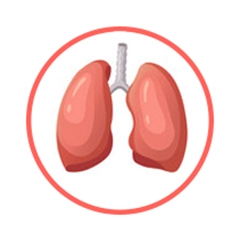
The Lungs is a so-called "Zang" Organ. Learn more about the Lungs in Chinese Medicine
Damp-Phlegm in the Lungs
Pulse type(s): Slippery (Hua), Soggy (Ru)
Tongue coating: Sticky coating, Thick coating
Tongue shape: Swollen
Symptoms: Nausea Asthma Coughing Wheezing Pale face Dizziness Chest fullness Phlegm in throat Shortness of breath Feeling of heaviness Profuse white sputum Dislike of lying down Sputum in the lungs and throat Stifling sensation in the chest
Er Chen Tang is sometimes prescribed by TCM practitioners to treat Damp-Phlegm in the Lungs. This pattern leads to symptoms such as coughing, pale face, phlegm in throat and stifling sensation in the chest. Patients with Damp-Phlegm in the Lungs typically exhibit slippery (Hua) or soggy (Ru) pulses as well as Swollen tongue with sticky white coating.
Phlegm in the Lungs is synonymous with Substantial Phlegm. It is Phlegm that is located in the Lungs and that can be seen. It is manifested by the swollen tongue. The main symptoms, on top of general Phlegm symptoms, are the heavy sputum that develops in the Lungs and throat as well as, in some... read more about Damp-Phlegm in the Lungs
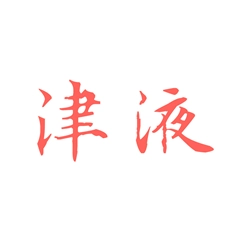
Body Fluids (Jin Ye) is one of Chinese Medicine's vital subtances. Learn more about Body Fluids in Chinese Medicine
Damp-Phlegm
Pulse type(s): Slippery (Hua)
Symptoms: Nausea Obesity Fatigue No thirst Fat belly Oily skin Overweight Swollen limbs Yellow dark skin Profuse white sputum Sticky taste in the mouth Epigastric focal distention Focal distention of the chest
Er Chen Tang is sometimes prescribed by TCM practitioners to treat Damp-Phlegm. This pattern leads to symptoms such as profuse white sputum, focal distention of the chest, epigastric focal distention and nausea. Patients with Damp-Phlegm typically exhibit slippery (Hua) pulses.
This Phlegm is associated with or deriving from Dampness. The typical manifestation is profuse amount of white sticky sputum which is easy to spit as well as overweight. For these middle age men who develop big, fat and soft bellies, there are often some degree of Damp-Phlegm.
The pattern can be... read more about Damp-Phlegm

Body Fluids (Jin Ye) is one of Chinese Medicine's vital subtances. Learn more about Body Fluids in Chinese Medicine
Phlegm-Fluids
Pulse type(s): Wiry (Xian)
Symptoms: Oedema Coughing No sweat Chest fullness No desire to drink Shortness of breath Vomiting of watery fluids Feeling of heaviness of body Abdominal distention and fullness Hypochondrial pain that is worse on coughing and breathing
Er Chen Tang is sometimes prescribed by TCM practitioners to treat Phlegm-Fluids. This pattern leads to symptoms such as abdominal distention and fullness, vomiting of watery fluids, feeling of heaviness of body and shortness of breath. Patients with Phlegm-Fluids typically exhibit wiry (Xian) pulses.
Both Phlegm and Fluids here are the pathological fluid wastes that fails to be expelled or drained out of the body. Then they can accumulate and settle down in any body parts, such as the Organs, Channels, joints, limbs and etc. If these Body Fluids store between the skin and muscle, they are... read more about Phlegm-Fluids

Body Fluids (Jin Ye) is one of Chinese Medicine's vital subtances. Learn more about Body Fluids in Chinese Medicine
Phlegm
Pulse type(s): Slippery (Hua), Wiry (Xian)
Tongue coating: Sticky coating, Thick coating
Tongue shape: Swollen
Symptoms: Lumps Nausea Tumors Oedema Nodules Obesity Fatigue Vertigo Delirium Belching Vomiting Dizziness Moodiness Overweight Bad breath Depression Watery milk Clear mucus Irritability Poor appetite Low metabolism Chest fullness Chest pressure Breast distention Abdominal fullness Sputum in the chest Feeling of heaviness Thick tongue coating Muzziness of the head Numbness in the limbs Thick greasy secretions Feeling of oppression of the chest No feeling of distension of the breasts
Er Chen Tang is sometimes prescribed by TCM practitioners to treat Phlegm. This pattern leads to symptoms such as feeling of oppression of the chest, muzziness of the head, dizziness and nausea. Patients with Phlegm typically exhibit slippery (Hua) or wiry (Xian) pulses as well as swollen tongue with sticky coating .
Phlegm has a great importance in Chinese Medicine as it is both a condition in and of itself as well as a cause for other diseases.
The main cause for the formation of Phlegm is Spleen Deficiency since the Spleen rules the transformation and transportation of Body Fluids. If this function is... read more about Phlegm

The Lungs is a so-called "Zang" Organ. Learn more about the Lungs in Chinese Medicine
Phlegm-Heat in the Lungs
Pulse type(s): Rapid (Shu), Slippery (Hua)
Tongue coating: Sticky coating, Yellow coating
Tongue shape: Swollen
Symptoms: Acne Fever Clump Thirst Asthma Phlegm Anxiety Coughing Wheezing Insomnia Dizziness Chest pain Constipation Chest fullness Feeling of heat Epigastric pain Phlegm in throat Shortness of breath Clumping in the chest Bitter taste in the mouth Epigastric focal distention Focal distention of the chest Stifling sensation in the chest Coughing of copious thick yellow sputum Feeling of heaviness of the head and body
Er Chen Tang is sometimes prescribed by TCM practitioners to treat Phlegm-Heat in the Lungs. This pattern leads to symptoms such as coughing, shortness of breath, wheezing and stifling sensation in the chest. Patients with Phlegm-Heat in the Lungs typically exhibit rapid (Shu) or slippery (Hua) pulses as well as Red swollen tongue with a sticky yellow coating.
This pattern is similar to Damp-Phlegm in the Lungs, but with additional Heat features, such as feeling of heat, thirst and profuse sticky yellow or green sputum. The typical manifestations of Phlegm are the coughing, short of breath, Phlegm in the throat and chest oppression. The Phlegm can also... read more about Phlegm-Heat in the Lungs
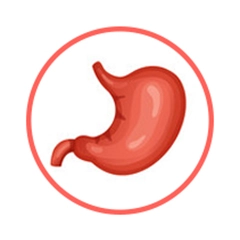
The Stomach is a so-called "Fu" Organ. Learn more about the Stomach in Chinese Medicine
Stomach Deficiency
Pulse type(s): Weak (Ruo)
Tongue color: Pale
Symptoms: Tiredness Dry mouth Depression Poor appetite Feeling of cold Nausea or vomiting
Er Chen Tang is sometimes prescribed by TCM practitioners to treat Stomach Deficiency. This pattern leads to symptoms such as nausea or vomiting, tiredness, feeling of cold and poor appetite. Patients with Stomach Deficiency typically exhibit weak (Ruo) pulses as well as a pale tongue.

Body Fluids (Jin Ye) is one of Chinese Medicine's vital subtances. Learn more about Body Fluids in Chinese Medicine
Damp-Cold Phlegm
Pulse type(s): Slippery (Hua)
Tongue coating: Thick white coating
Symptoms: Nausea Vomiting Dizziness Palpitations Focal distention Coughing with copious white sputum Stifling sensation in the chest and epigastrium
Er Chen Tang is sometimes prescribed by TCM practitioners to treat Damp-Cold Phlegm. This pattern leads to symptoms such as nausea, vomiting, stifling sensation in the chest and epigastrium and palpitations. Patients with Damp-Cold Phlegm typically exhibit slippery (Hua) pulses as well as a tongue with thick white coating.
Formulas similar to Er Chen Tang
Xiong Gui Er Chen Tang is 71% similar to Er Chen Tang
Liu Jun Zi Tang is 67% similar to Er Chen Tang
Ban Xia Bai Zhu Tian Ma Tang is 62% similar to Er Chen Tang
Wen Dan Tang is 62% similar to Er Chen Tang
Ban Xia Hou Pu Tang is 60% similar to Er Chen Tang
Huang Lian Wen Dan Tang is 57% similar to Er Chen Tang


